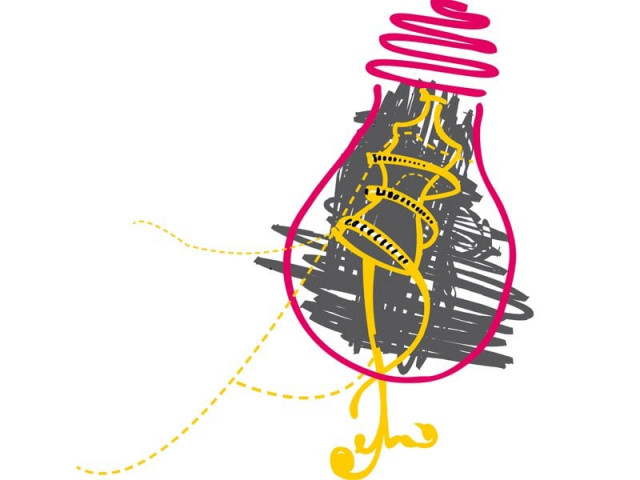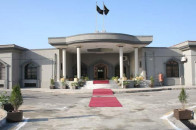Load-shedding, low output and livid designers
A look at how our designers are faring in this hot mess of a situation.

How our designers are faring in this hot mess of a situation. DESIGN: FAHAD NAVEED
While our Prime Minister Mian Nawaz Sharif vowed to make the country’s energy crisis his government’s topmost priority earlier this month, garmi mein kharaab citizens all over the country have had no respite from the horrifyingly long power outages just yet.
From skilled workers to business owners, people are facing regular 10-hour power outages, with some breakdowns lasting as long as 48 hours! So how are our designers faring in this hot mess of a situation?
Karachi-based designer Rizwan Beyg describes how the outages are creating havoc. “The situation is very serious because it’s affecting the lives of all the employees as well,” says Beyg. “No bijli all night means karigars come to work groggy — it affects the final outcome. We have to rely on generators to run our karkhanas, but after three hours, they have to be shut down.”
Shehla Chatoor adds to this, explaining that running workshops on generators can be costly. “I have a back-up generator in my workshop, but it is very costly to run on generator,” says Chatoor. “Fabrics and other items get delayed in the market as they rely on electricity for production. The poor workers and small industries cannot afford to run on generators.”

Warda Saleem says the whole industry is affected. “We use machines that require a lot of power and the UPS is certainly not an option,” says Saleem. “The use of generators increases, which then affects the cost of products directly.” As a result of increased production costs, designers say that they are forced to increase the sale price of the product.
Lahore-based designer Fahad Hussayn says he is faced with an average of 16 hours of load-shedding. “It is a complete loss for any designer,” says Hussayn. “In the good old days it was one suit per tailor, but now it takes up to three days to make a suit!”
Rizwan expands that the load-shedding duration varies from one hour to all day. “The figures, in terms of losses, vary from a few thousand to Rs100,000 a week,” he says. “We work with generators but, with constant increases in fuel prices, the extra cost is added to the garment price, making it more expensive for the consumer and raising inflation.” He adds, “The government thinks that by raising fuel prices, they will be able to meet their circular debt. What they don’t realise is that it’s a spiraling effect that ultimately affects the consumer and finally their constituency; so, in the coming election year, there will be fewer votes.”
While all the designers hope and pray that this issue is resolved, Chatoor feels there is some good news. “Recently, I saw that KESC and SSGC have reached an accord on increase in gas supply, so I hope the problem will be resolved soon,” she says. “The government must address the issue of circular debt, theft, capacity increase and explore the use of coal for power generation.” She also feels that Pakistan uses expensive fuels for production of electricity, the cost of which is again passed on to the poor masses. “India, China and the US produce most of their electricity with coal, so why can’t we do the same?” she asks. “We have more than sufficient reserves of coal in our country.”
Rizwan, however, has no hope. “I don’t think there seems to be any political will,” he says. “Lahore has a $700 million bus system that it could do without and now Karachi has been promised one. We have buses — but we don’t have bijli.”
Published in The Express Tribune, June 18th, 2013.
Like Life & Style on Facebook, follow @ETLifeandStyle on Twitter for the latest in fashion, gossip and entertainment.



















COMMENTS
Comments are moderated and generally will be posted if they are on-topic and not abusive.
For more information, please see our Comments FAQ